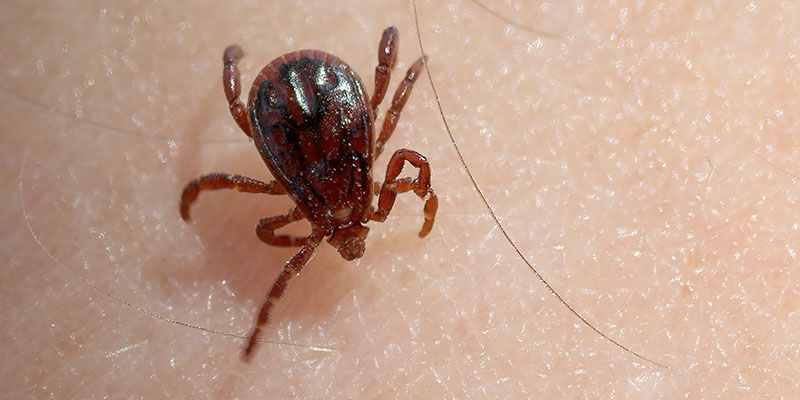Ticks. Probably one of the most notorious pests on the planet and definitely in Phoenix. But, why are these tiny insects so feared? Well, because they feed on blood. And, they can get blood from a number of sources in the wild. But, ticks can also find plenty of the rich platelets they need to survive right in your home – making household pets and people a prime feeding source.
Common Ticks in Phoenix
Ticks are just one of the many pests in Phoenix, Arizona, much like other parts of the country. And, there are a few species of ticks that can be found in the area and well beyond.
The most common tick species in Phoenix is the brown dog tick (known in entomological circles as Rhipicephalus sanguineus). This tick species is commonly found on domesticated dogs and can infest homes, particularly in warm environments.
What’s most unsettling is that brown dog ticks can transmit diseases such as Rocky Mountain spotted fever and tick-borne typhus, so it’s important to take preventative measures to reduce the risk of tick infestations, especially if you have household pets. If you find ticks on your pets, it’s important to remove them carefully and promptly to prevent the transmission of diseases.
How To Tell if Ticks are In Your House
Now, the trouble is, ticks can be difficult to detect in your house since they are so small and tend to hide in crevices and corners. However, if you suspect that there may be ticks in your house, here are some telltale signs to be on the lookout for:
- Pets scratching and/or biting: If your pets are scratching and/or biting themselves excessively, it may be a sign that they have picked up ticks. Inspect your pets carefully, paying close attention to areas such as their ears, neck, and underbelly.
- Black specks on surfaces: Ticks can leave behind feces, which appear as small black specks on surfaces such as bedding, furniture, or floors. If you notice these specks, it may be an indication of a tick infestation.
- Musty odor: Ticks can emit a musty odor that can be noticeable in infested areas. If you notice an unusual odor in your home, it’s worth investigating to see if ticks may be the cause.
- Seeing ticks: Although ticks are small, they can sometimes be visible to the naked eye. Look for small, dark-colored insects crawling on surfaces or on your pets. (They can also be found in cracks and crevices.)
If you suspect that there are ticks in your house, it’s really important to take action to address the problem as soon as possible. This may include vacuuming carpets and furniture, washing bedding and pet bedding in hot water, and contacting a professional pest control service to treat your home.
It is also essential to take preventative measures, such as regularly checking your pets for ticks and keeping your lawn trimmed and debris-free to reduce the risk of tick infestations.
How to Get Rid of Ticks in Your Home
If you have found ticks in your house, it’s critical to take action to eliminate them as they can carry diseases and pose a risk to your health. Here are some simple steps you can take to get rid of ticks in your house:
- Vacuuming: Use a high-powered vacuum cleaner to clean floors, carpets, and furniture. Be sure to vacuum all areas of your home, paying extra attention to places where your pets spend time. After vacuuming, immediately dispose of the vacuum bag outside of your home.
- Washing: Wash bedding, linens, and clothing in hot water to kill any ticks that may be hiding in them. You should also wash your pet’s bedding and toys regularly and examine them for signs of ticks.
- Pest control treatment: Contact a professional pest control service to treat your home. They will be able to use specialized chemicals and treatments to eliminate ticks and prevent future infestations.
- Yard maintenance: Ticks often come from the outdoors, so it’s important to maintain your yard properly to prevent tick infestations. Keep your lawn trimmed, remove any debris or leaf litter, and create a barrier between your lawn and wooded areas.
- Tick repellent for pets: Use a tick repellent on your pets to prevent them from bringing ticks into your home. Speak with your veterinarian about the best options for your pets.
It’s important to note that ticks can be difficult to eliminate completely, so it’s often necessary to take preventative measures to reduce the risk of future infestations. If you are experiencing a severe tick infestation or have concerns about the safety of the treatments, it’s best to consult with a professional pest control service right away.
